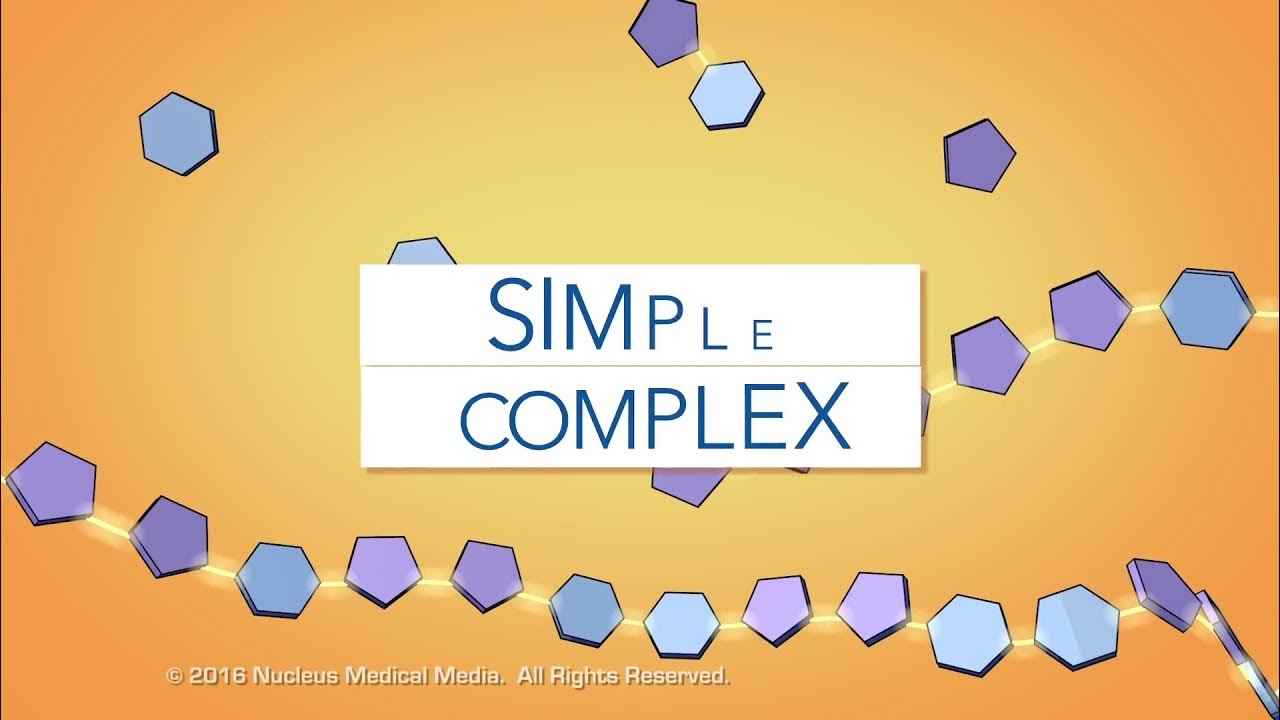Carbohydrates | A type of biological molecule | Functions and Classification
Summary
TLDRThe video script delves into the world of carbohydrates, essential organic compounds for the body, highlighting their role as a primary energy source. It explains the structure and types of carbohydrates, including monosaccharides, disaccharides, and polysaccharides, and their functions in energy production, storage, and as structural components in living organisms. The script also touches on the process of cellular respiration and the importance of carbohydrates in plant and animal structures, emphasizing their multifaceted role in biology.
Takeaways
- 📚 Carbohydrates are one of the most important organic molecules for the body, discovered in the 1980s.
- 🌟 Carbohydrates are composed of carbon, hydrogen, and oxygen, with hydrogen and oxygen in the same ratio as in water, hence the name.
- 🔍 Monosaccharides are the simplest form of carbohydrates, like glucose, which is a key energy source for living organisms.
- 🔗 Polysaccharides are complex carbohydrates formed by the polymerization of monosaccharides, such as starch and glycogen.
- 🍞 Starch is a polysaccharide that serves as a storage form of glucose in plants, while glycogen fulfills the same role in animals.
- 🚀 The functional groups of carbohydrates can determine whether they are reducing sugars, which can donate hydrogen in chemical reactions.
- 🌾 Plants produce glucose through photosynthesis, using carbon dioxide and water, which is then used or stored for energy.
- 🏗️ Cellulose, a type of carbohydrate, is a structural component in plant cell walls, providing strength and rigidity.
- 🍇 Disaccharides, such as sucrose and lactose, are formed from the condensation of two monosaccharide molecules, with water released in the process.
- 🔑 The digestion of carbohydrates in the human body involves enzymes that break them down into monosaccharides, which can then be absorbed and utilized for energy.
- 🚫 Polysaccharides like cellulose are indigestible in humans, but they are important for dietary fiber and gut health.
Q & A
What is the main topic of discussion in the script?
-The main topic of discussion in the script is carbohydrates, their importance, types, and functions in the body.
What is the basic building block of carbohydrates?
-The basic building block of carbohydrates is the monosaccharide, which is a simple sugar like glucose.
How are monosaccharides related to disaccharides?
-Monosaccharides combine to form disaccharides. For example, glucose and fructose can combine to form sucrose, a disaccharide.
What is the process of breaking down complex carbohydrates into simpler forms?
-The process of breaking down complex carbohydrates into simpler forms is called hydrolysis.
What are polysaccharides and how are they formed?
-Polysaccharides are complex carbohydrates formed by the polymerization of many monosaccharide units. They include starch, glycogen, and cellulose.
What is the role of carbohydrates as an energy source in living organisms?
-Carbohydrates serve as a primary source of energy for living organisms. They are broken down through cellular respiration to release energy that the body utilizes.
What is the significance of the functional group in carbohydrates?
-The functional group in carbohydrates, which is the presence of hydroxyl groups attached to carbon atoms, determines their chemical properties and reactivity, such as their tendency to form hydrogen bonds and participate in hydrolysis reactions.
How do carbohydrates play a role in the structural integrity of plants?
-Carbohydrates, particularly cellulose, provide structural integrity to plants by forming strong fibers that make up the plant cell walls, giving them strength and rigidity.
What is glycolysis and how does it relate to the metabolism of glucose?
-Glycolysis is the metabolic process in which glucose is broken down into pyruvate, releasing energy in the form of ATP. It is a key step in cellular respiration and occurs in the cytoplasm of the cell.
What are the different types of sugars mentioned in the script?
-The script mentions monosaccharides like glucose and fructose, disaccharides like sucrose and lactose, and polysaccharides like starch, glycogen, and cellulose.
How are carbohydrates stored in the body?
-In the body, carbohydrates are stored as glycogen in the liver and muscles for quick energy release when needed. In plants, they are stored as starch and cellulose.
Outlines

此内容仅限付费用户访问。 请升级后访问。
立即升级Mindmap

此内容仅限付费用户访问。 请升级后访问。
立即升级Keywords

此内容仅限付费用户访问。 请升级后访问。
立即升级Highlights

此内容仅限付费用户访问。 请升级后访问。
立即升级Transcripts

此内容仅限付费用户访问。 请升级后访问。
立即升级5.0 / 5 (0 votes)






